Pool School: Pool Maintenance for Beginners
Updated: Mar. 09, 2023
By practicing some simple, basic maintenance, you can help maximize the life of your pool—keep it at the center of family activities for years to come.
Just like people, pools should get regular health check-ups. By practicing some simple, basic maintenance, you can help maximize the life of your pool—keep it at the center of family activities for years to come. And why wouldn’t you want to? After all, according to some surveys, the average cost of an in-ground pool ranges from around $20,000 to more than $42,000, including materials and labor. That’s some serious coin—an investment well worth protecting.
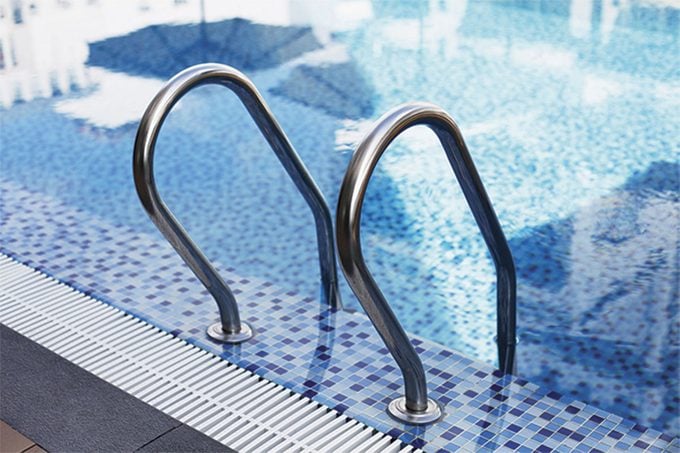
So where do you start? Here are five things to keep an eye on during pool season.
On This Page
Developing Good Chemistry
Ensuring your pool’s water maintains the correct pH and alkalinity levels is a big part of pool maintenance. To understand why this is important, it’s helpful to first understand what pH and alkalinity mean.
The term “pH” (or potential hydrogen) is a measure of a solution’s acidity. Alkalinity, on the other hand, reflects the level of substances in water with acid-neutralizing ability. Think of it this way: While pH measures acidity, alkalinity represents the water’s ability to neutralize those acids and keep them stable. In other words, proper alkaline levels will prevent wide fluctuations in pH levels.
So what are the proper levels for pH and alkalinity in pool water? Good question. The pH level should measure between 7.2 and 7.8, while total alkalinity should measure between 80 and 120 parts per million. Pool water should be tested at least two to three times a week, more if a pool is used frequently. (Test kits for both pH and alkalinity are available at pool-supply stores or home centers; some kits also contain instructions for how to raise or lower pH and alkalinity levels.)
Why is all this important? If the pH level is too low, the water attempts to balance itself, possibly by corroding things like plaster or metal parts of pumps, heaters, filters and the like. If the pH level is too high, it can promote the formation of scale deposits on the pool walls, equipment and plumbing. In addition, it’ll make your pool water cloudy, a definite no-no.
This is more than just an aesthetic consideration; it’s also a safety issue because cloudy pool water is considered a drowning hazard. (The Centers for Disease Control and Prevention suggests that if you can’t see the drain at the deep end of a pool from the deck, your water is too cloudy for safe swimming.)
Of the two closely related measures, the pH level is the most important. But always measure total alkalinity first, because it’s a major factor in driving the pH level; remember, the correct alkalinity level helps prevent wild fluctuations in pH levels.
To raise alkalinity, use sodium bicarbonate, or baking soda. (Consult your pool system specifications for more information.) To lower pool-water alkalinity, use ACID Magic®, the user-friendly muriatic acid made by Certol International. It’s easier to work with than standard muriatic acid because it produces 90 percent less noxious fumes. Moreover, it’s certified by the National Sanitation Foundation (NSF) International and meets the American National Standards Institute (ANSI) Standard 50 for safe use in pools. Even better, ACID Magic doesn’t contain phosphates or phosphorus containing ingredients, so it’s much gentler on pool pumps and heat exchangers. (Nonetheless, please always wear gloves and protective eyewear. Also, ACID Magic isn’t recommended for all pool liners, so it’s a good idea to first check with the manufacturer.)
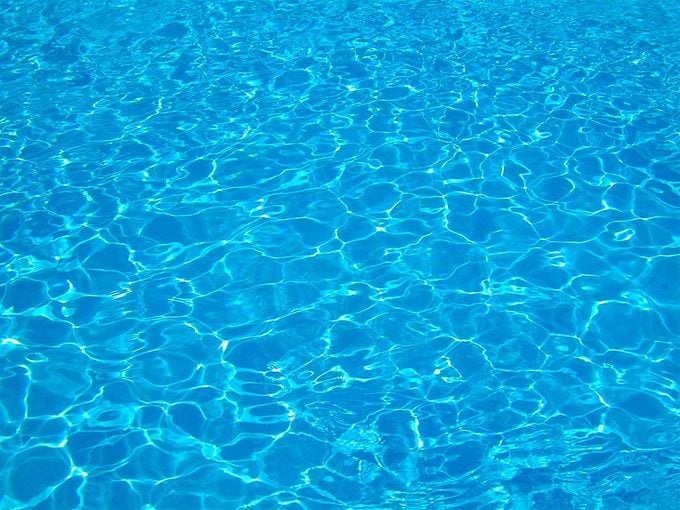
Promote Peak Pump Performance
The pump literally is the heart of your pool’s ecosystem, pushing water through the filter and properly dispersing chemicals. Properly circulated and filtered water results in cleaner pools, which makes regular maintenance easier, too.
The good news is that pumps don’t need a lot of TLC. One of your most important tasks is cleaning out the strainer basket inside the pump, preferably at least once a week. Just remove the pump housing and find the basket (hopefully you kept your owner’s manual!). A clogged strainer makes your pump work harder than it needs to, shortening its life.
And while you’re at it, now’s a good time to check out the O-ring for cracks and other signs of wear. (The O-ring is the gasket that seals the housing lid and keeps water from leaking out of the pump.) It also can’t hurt to lubricate it with an approved lubricant (experts advise against using Vaseline).
BONUS TIP: How long should your pump run every day? Ideally, 24 hours. But that can get expensive. So instead, aim for 10 to 12 hours a day, or long enough to run the water through the filter system at least one time every day.
Keep it Clean
At first glance, restoring a neglected pool to all its aquatic glory can appear to be a daunting task. But ACID Magic, the user-friendly alternative to conventional muriatic acid, is a powerful ally in removing built-up mold stains, mildew stains and algae stains. (Even though ACID Magic’s unique chemical blend significantly reduces noxious fumes by 90 percent and is safer to handle than standard muriatic acid, you still should wear gloves and protective eyewear when using it.)
To use ACID Magic, start with a 1:2 dilution of water (one gallon of ACID Magic with two gallons of water). To avoid a potential unwanted reaction, always add ACID Magic to water, not vice-versa! Typical coverage is 100 to 300 square feet, depending on the pool’s depth and the extent of the neglect. If you find this solution isn’t strong enough, add more ACID Magic, up to full strength, if need be.
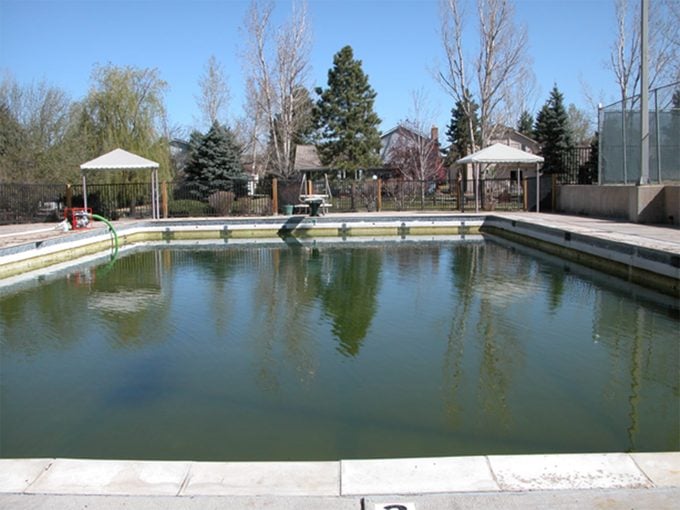
Always make sure the surfaces being cleaned are wet. Furthermore, ACID Magic isn’t recommended for all pool liners; ask your pool manufacturer about compatibility. In addition, don’t allow ACID Magic to contact other surfaces, such as wood and metal, to avoid potential discoloration.
Before you start, first wash the pool with trisodium phosphate solution (TSP) to remove any oily residues. Start in the shallow end and clean small areas, using a scrub brush. Then rinse the pool.
Now the real magic begins! First make sure the pool walls are wet. Then liberally apply ACID Magic with a sprinkling can or a low-pressure, acid-resistant sprayer. You also can use a mop to apply it to pool walls. Lightly scrub with a natural soft-bristle brush as required. (Please note that you shouldn’t use nylon brushes when working with ACID Magic.)
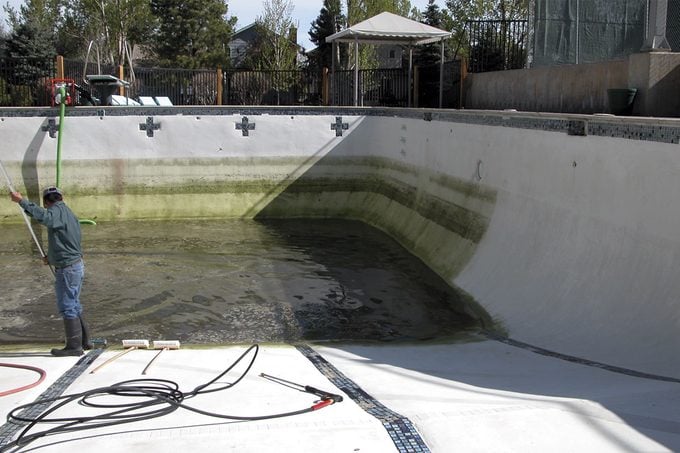
Then let the ACID Magic sit for two to four minutes. If you’re etching a plaster pool, you can tell when the process is complete by applying water. If it’s quickly absorbed into the plaster, etching is complete. If not, reapply ACID Magic—but thoroughly rinse between applications.
After your pool is completely acid-washed, rinse again with water. (For more information on acid washing, please click here.)
Now there’s just three steps left to go. The first involves neutralizing the pool surface and wastewater by dissolving two to three ounces of TSP into one gallon of water, then scrubbing down the pool again and rinsing it down. If you don’t do this, the pH level in the water may be too low when you refill the pool.
Second, rinse the pool thoroughly with clean water one more time and let it all drain before filling. And third, change into your swim suit and get the pool party started!
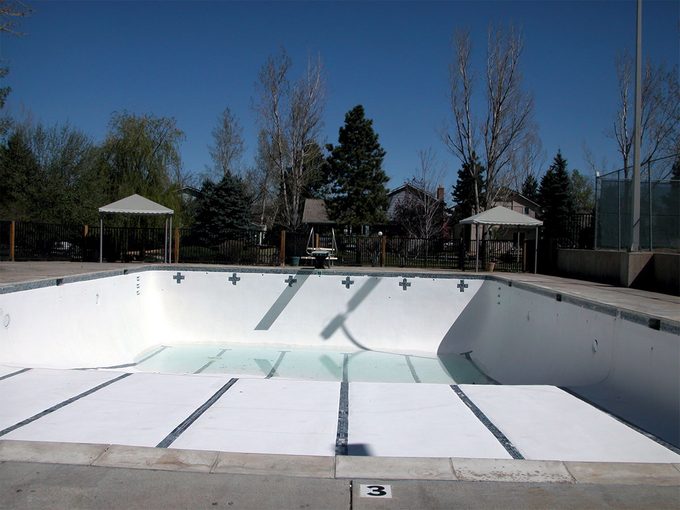
Focus on Filters
If the pump is the heart of your pool, the filter is akin to its liver or kidneys, filtering out debris and other impurities that can affect your pool’s good health. Generally speaking, there are three kinds of filters: cartridges, sand and diatomaceous earth (DE).
Cartridges essentially consist of pleated polyester cylinders with caps on each end—very similar to those used on shop wet/dry vacs, only much longer. They should be cleaned a couple times a year by spraying them with water from a hose.
As their name implies, sand filters consist of a filtration tank filled with sand. The rough edges of the grains of sand trap particles. You can clean them by reversing the flow of water through the filter, known as “backwashing.” (Consult your owner’s manual, as backwashing techniques vary by manufacturer.)
You’ll know it’s time to backwash when the pressure gauge on the filter starts to rise. In addition, every five to seven years, you’ll also need to replace the sand because the grains’ sharp edges get worn down, reducing their effectiveness.
DE filters, the most effective kind, are named for their filtering element: microscopic, fossilized organisms called diatoms. Once again, the filter’s pressure-gauge reading will alert you when it’s time for a cleaning, accomplished by backflushing. You also need to restock the filter with more DE powder; follow the filter-manufacturer’s directions. (Also be aware that some municipalities have special guidelines for disposing of DE.)
BONUS TIP: Scale buildup is one of the most common challenges for salt-pool owners. If you notice buildup inside your electrolytic chlorine generator (ECG) on the cell plates and need to restore them, ACID Magic’s fume-reduction formula is ideal as you work up close and personal during salt-cell cleaning.
Primer on Skimmers
Skimmers are those little rectangular inlet boxes built into the sides of your pool, right at the water line. As their name implies, they help skim debris as the pool’s pump pulls water into them. Each skimmer has a basket that catches the debris; without that strainer, larger items such as twigs and leaves would make their way to and damage the pump and filter.
Skimmers should be cleaned once a week. To do so, just turn off the pump, remove the skimmer lid (located on the pool deck), take out the basket and empty it. Then put the basket back and reinstall the lid.
Sure, maintaining a pool requires effort. (It helps to create a maintenance calendar to stay on top of it all.) But rest assured, all of these “health check-ups” are well worth the time expended. They’ll help protect your investment—and keep the good times rolling!
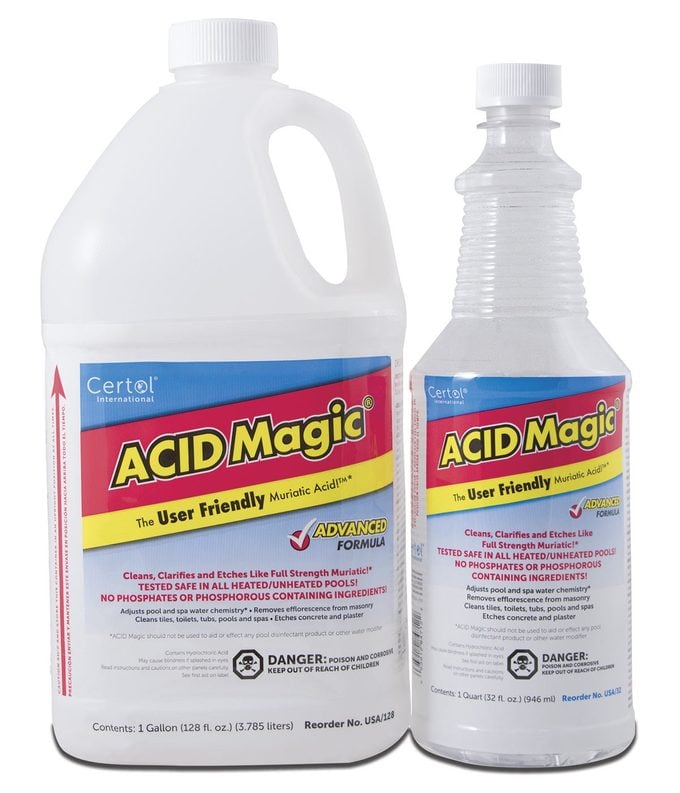
ACID Magic is sold at Ace Hardware and True Value hardware stores, as well as many companies that sell pool supplies. To learn more about where ACID Magic is sold, click here.
Sponsored by Acid Magic